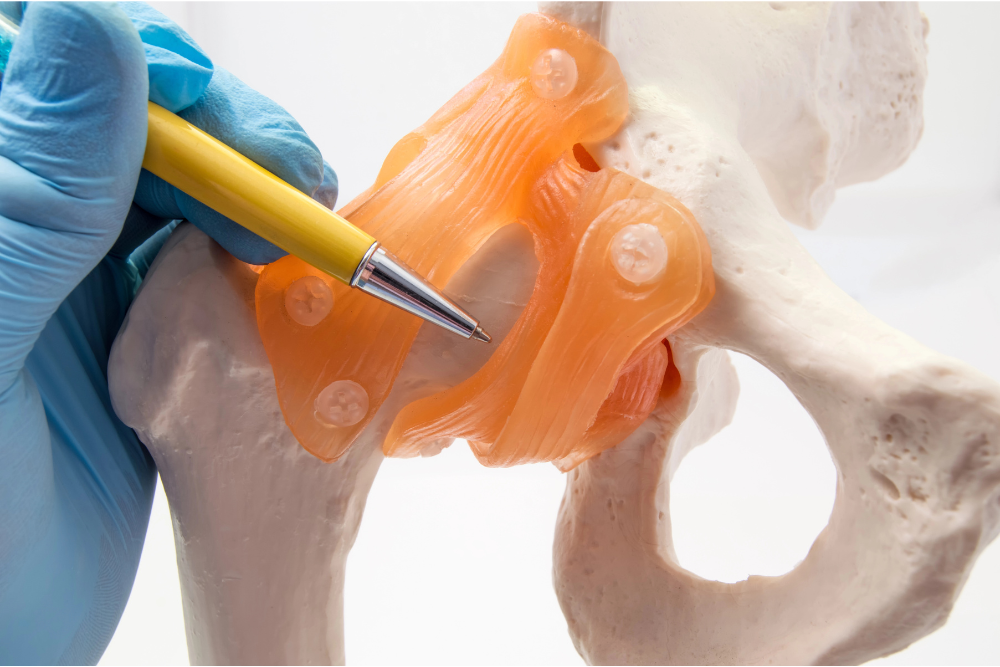Is it Time for Total Hip Replacement? What You Need to Know
Home > Blog > Is it Time for Total Hip Replacement? What You Need to Know


If you’ve been dealing with hip pain that doesn’t go away and affects your daily activities, you may be wondering if it’s time for a total hip replacement. This surgery is often a life-changing solution for people with severe hip problems, but it’s important to know when it’s the right time to consider it.
If you’ve been dealing with hip pain that doesn’t go away and affects your daily activities, you may be wondering if it’s time for a total hip replacement. This surgery is often a life-changing solution for people with severe hip problems, but it’s important to know when it’s the right time to consider it.
What Is Total Hip Replacement?
Total hip replacement is a surgery in which a doctor removes the damaged parts of the hip joint and replaces them with artificial components. The hip joint is a ball-and-socket joint, with the ball being the top of the thigh bone (femur) and the socket being a part of the pelvis called the acetabulum. Over time, the cartilage in the joint can wear down, leading to pain and stiffness.
In a hip replacement, the orthopedic surgeon removes the damaged ball and socket and replaces them with artificial parts, usually made of metal, ceramic, or plastic. This can help reduce pain, improve mobility, and make everyday activities easier.
When Should You Consider Total Hip Replacement?
There are a few key signs that might indicate it’s time to think about hip replacement surgery. While your orthopedic doctor will ultimately guide you in this decision, here are some warning signs that may mean you’re ready for a hip replacement:
Chronic Pain
If you’ve been dealing with hip pain for months or even years, and it doesn’t improve with rest, medication, or physical therapy, it may be time to consider surgery. Pain that gets worse with activity or doesn’t go away even when you rest can be a sign that your hip joint is severely damaged.
Limited Mobility
As your hip joint becomes more damaged, it can become harder to move your leg. You may find it difficult to bend, twist, or even walk comfortably. If your hip is so stiff or painful that it affects your ability to get in and out of a car, walk short distances, or climb stairs, it may be time for surgery.
Difficulty with Daily Activities
If hip pain is making it hard to do things you used to enjoy, like walking, gardening, or exercising, it can affect your quality of life. When everyday tasks become challenging, total hip replacement surgery can help restore your ability to move freely and resume normal activities.
Ineffective Nonsurgical Treatments
Before turning to surgery, doctors usually try nonsurgical treatments like physical therapy, medications, or injections to reduce pain and improve function. If these treatments aren’t working or the relief is only temporary, it might be time to consider a total hip replacement.
How is Total Hip Replacement Performed?
Total hip replacement is a major surgery that is effective in reducing pain and improving mobility. The procedure lasts a few hours and is done under general anesthesia, which means you’ll be asleep during the surgery.
Here’s a general outline of the procedure:
- Incision: The surgeon makes an incision in your hip area to access the joint.
- Removal of Damaged Parts: The damaged ball at the top of your femur and the worn-out socket in your pelvis are removed.
- Insertion of Artificial Parts: The surgeon replaces the ball and socket with artificial components. These parts are usually made of metal, plastic, or ceramic.
- Closing the Incision: After the new joint is in place, the orthopedic surgeon closes the incision using stitches or staples.
Once the surgery is done, you will be moved to a recovery room, where medical staff will monitor you as you wake up from anesthesia.
What is the Total Hip Replacement Surgery Recovery Process Like?
After a total hip replacement, the recovery process can take time, but most people find that they experience a significant reduction in pain and an improvement in mobility. Here’s what you can expect:
Hospital Stay
You will likely stay in the hospital for a few days after surgery. During this time, your healthcare team will monitor your condition and help you manage pain. You’ll also begin physical therapy to start improving the strength and mobility of your new hip.
Physical Therapy
Physical therapy is a key part of recovery. A physical therapist will guide you through exercises designed to strengthen the muscles around your hip and improve your range of motion. The more you follow your therapy plan, the quicker your recovery will be.
Returning to Normal Activities
After a few weeks, you may be able to return to light activities like walking and driving. Full recovery can take 3 to 6 months, and you should avoid high-impact activities, like running, during this time. Most people can return to normal activities within a few months, although it may take longer for more strenuous activities.
Long-Term Care
Even after you recover, you will need to take care of your new hip joint. Regular physical activity can help keep the muscles around your hip strong, which can prevent future problems. You’ll also need to avoid activities that can place too much stress on the joint, such as high-impact sports.
Conclusion
Total hip replacement surgery can be life-changing for people suffering from chronic hip pain and limited mobility. If nonsurgical treatments haven’t worked and you’re finding it harder to do everyday tasks, it might be time to talk to a hip replacement specialist at Southern California Orthopedic Surgeon about surgery. While it’s a big decision, total hip replacement surgery can provide significant relief and help you return to a more active, pain-free life. Contact us today!
Tagged Total Hip Replacement
